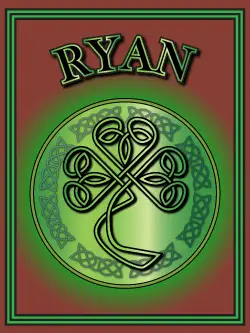Ryan is the eighth most popular surname in Ireland. It comes from the Gaelic words ‘righ’ and ‘an’ which together mean ‘little king’.
The name derives from the Irish name O’Riain, which in turn derived from the name O’Mulriain.
It was common for names to be anglicised in the early 18th century as the country was under British rule and people with Irish names found it very difficult to find work.
The motto on the Ryan family crest is ‘Malo More Quam Foedari’ which means ‘I would rather die than be disgraced’.
Two main ancestors
There are two likely ancestors for most Ryans, depending on which part of Ireland they come from.
Many Ryans from the West of Ireland can trace their roots back to a 9th century chieftain called Maelruain. His descendants took the name O’Maelruain.
Over time the name became Anglicised, first to O’Mulryan and later simply Ryan. These Ryans lived in the counties of Clare and Limerick.
King Rain for the East Ireland Ryans
Ryans from the East of Ireland are likely to have descended from a 10th century King Rain who ruled Ui Cinsealaigh, which was a large area in what is now South Leinster. His descendants took the name Ua Riain or O’Riain.
These names became anglicised to Ryan. Most Ryans in Counties Wexford, Kilkenny and Carlow would come from this family.
Famous Ryans throughout history
The Americans had 322 Ryans in their ranks during the American Revolution. These included Captain Philip Ryan of the Philadelphia City Militia; Major Robert Ryan of the Georgia Continental Brigade; and Lieut. Michael Ryan of the 1st regiment of the New York Line.
Abram Ryan was born in Maryland in 1836. He was a priest and helped soldiers on the Confederate side during the American Civil War. He would help patients who were suffering from smallpox when many people wouldn’t go anywhere near them.
Poet of the Confederacy
He was also a talented poet and wrote about the war. He was known as the ‘Poet of the Confederacy’ thanks to poems such as The Conquered Banner” and “Sword of Robert Lee”. He spent his life helping others and supported many children’s charities. There is now a monument to him in Mobile, Alabama.
Desmond Ryan was secretary to Patrick Pearse, leader of the Irish Rebellion. Ryan later wrote a number of historical accounts of the key figures in the 1916 Easter Rising.
Cornelius Ryan was born in Dublin and was a journalist during the Second World War. He was also an author and two of his books, The Longest Day and A Bridge Too Far, were made into hit movies.
